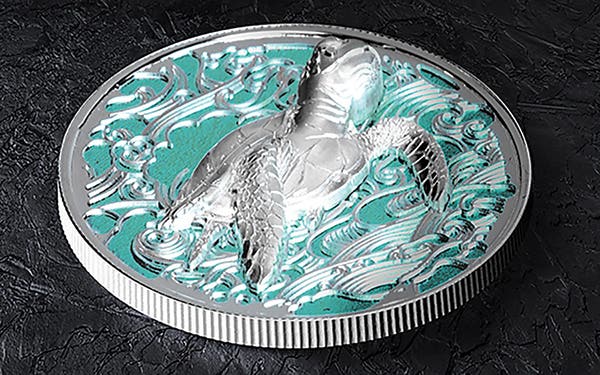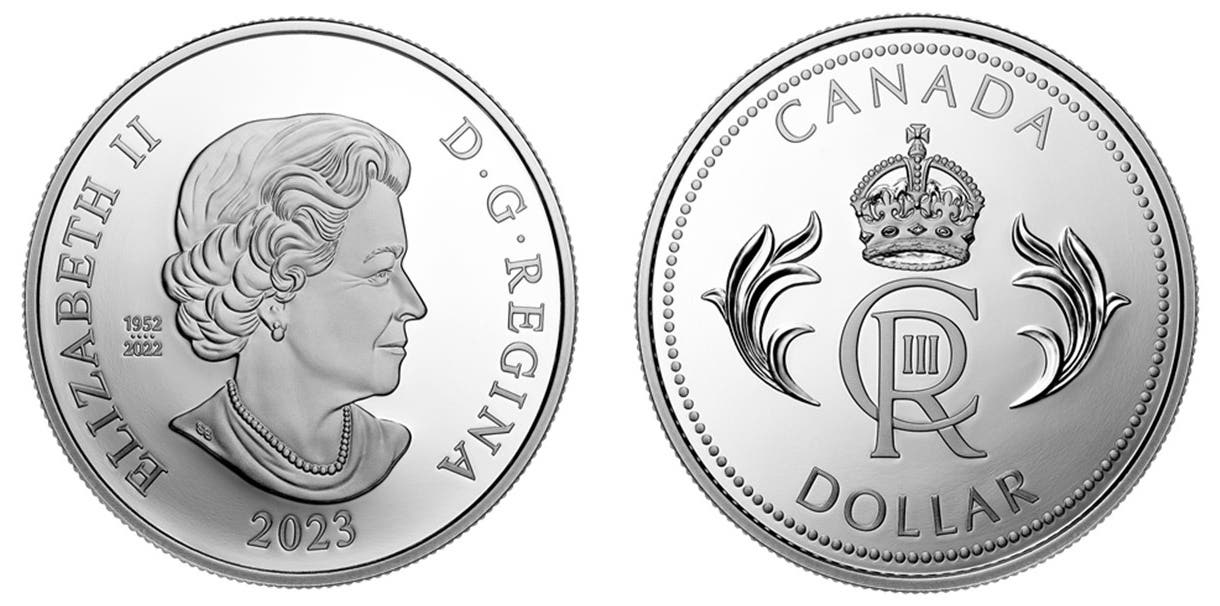Reverse proof might not be one
Readers be warned! If you are offered a 2004 (or any date) silver American Eagle that appears at first glance to be a reverse proof, it might be a post-mint…
Readers be warned! If you are offered a 2004 (or any date) silver American Eagle that appears at first glance to be a reverse proof, it might be a post-mint alteration of a genuine coin.
At the Michigan State Numismatic Society Fall Convention held Nov. 25-27 at the Macomb Community College, local dealer John Mason of S & G Coins & Jewelry in Highland, Mich., dropped off a 2004 silver Eagle at the Combined Organizations Of Numismatic Error Collectors Of America club table for my opinion as to what it might be.
At first glance it appeared to be a somewhat muted but genuine reverse proof dated 2004. However, the United States Mint did not start offering reverse proof silver Eagles to collectors until 2006.
Reverse proof describes a proof coin that has had its design and other raised devices polished on the die to a mirror-like finish while the fields are processed to exhibit a matte or satin finish. Coins struck from such dies exhibit this effect. This creates a mirror-like Miss Liberty with matte fields. This is the opposite of normal proof coins that exhibit frosted devices (Miss Liberty) and mirror-like fields.
At first I paid no attention to the date and assumed I was supposed to be looking for a variety and immediately noticed it sported strong doubling as a sort of halo around the central designs of both the obverse and reverse.
But the doubling was strange, neither Strike Doubling (a.k.a. Machine Doubling) or Die Deterioration Doubling or anything I was familiar with.
I handed the coin to fellow CONECA club table examiner James Motley for his opinion and he was just as baffled at which point we both started wondering if the coin was genuine.
I then popped it onto my scale and found it weighed 31.4 grams – nearly .3 grams over what a U.S. Mint silver Eagle should weigh and well over what the Mint would release unless in error. What were the chances of it sporting a muted reverse proof effect, a halo of doubling and being significantly overweight if genuine?
I then asked Motley if he’d take it down to Michael White of ANACS for an opinion and White was just as baffled as we were at which point we all began to become more convinced it might be a Chinese counterfeit.
However, Motley was not through and showed it to a few dealers on the way back to our table and ran into one dealer, Steve Garvin, owner of Honor Coin and Stamp in Traverse City, Mich., who knew all about the coin.
He said it represented the latest incarnation in colorized silver American Eagles that are often found being offered to the general public in national ads and on TV shopping shows.
Apparently, in an effort to cash in on the popularity of reverse proof silver Eagles, somebody got the bright idea to take regular bullion coin strikes for 2004 (and possibly other years) where no reverse proofs exist and “colorize” them with a shiny silver finish on the devices and offer them as special items. Almost all the bullion issues and all the specimen strikes for the series exhibit an intentional matte or satin finish to a greater or lesser degree making the task of converting them into reverse proof look-alikes an easier task.
In 1999 I attended a wholesale gem, mineral and jewelry show in Troy, Mich., where I met a gentleman who was offering for sale the equipment that had the capability of creating items with just some areas of a work piece gold plated while leaving other areas untouched. I had a number of reproduction coins with me in the hopes of finding a way that could incorporate them into tie tacks.
He asked if he could demonstrate the process on one of my coins and I watched him gold plate Miss Liberty on a 1913 Liberty nickel reproduction. It took him less than a minute to complete the job and the gold completely masked the light frosted nickel finish with a brilliant gold finish. Many in the industry refer to this as “gold select” and other fancy names intended to put more sizzle in the marketing steak.
In this case, it is apparent that the plating medium of choice was silver to be plated over the satin finish of the original silver.
The doubling surrounding the designs is what I now refer to as “spillover” and for some reason is not shiny. I do not know why the doubling is not shiny unless the process involves a template to mask the fields and an ultra-fine polishing process is applied to the designs after they are plated. This would leave the area of the field containing the spillover untouched and thus the halo effect. The addition of metal to the coin also accounts for the added weight.
What I do know for sure is that these are not genuine United States Mint modifications and are technically alterations of a genuine coin. This could also be occurring with other dates including where there are genuine reverse proof counterparts created by the Mint. Caution is advised.
This coin was found by Mason in another dealer’s tub of generic one-ounce bars and rounds generally offered by dealers at small premiums over silver value suggesting the seller knew it was just “junk silver” that came in with other post-Mint colorized items.
In checking uncertified reverse proofs look for the halo of doubling which is quite prominent on the alterations and check to see if they are overweight. Additionally, the piece I examined did not have the reverse proof effect on the lettering above the date as it should have had, though it was very prominent within the entire area of the exergue including the date as it should be. Also, the reverse proof effect is more dramatic on the genuine items so don’t get fooled into believing that dates with a lesser effect are experimental strikes, or just later die states. If in doubt, pass on the coin.
Readers who have seen other dates, or have more information on the process used to create these alterations are encouraged to contact “Numismatic News” editor Dave Harper by email at david.harper@fwcommunity.com.
Ken Potter is co-author of “Strike It Rich With Pocket Change” and has written many feature articles for “Numismatic News” and for “World Coin News.” He can be contacted at kpotter256@aol.com. An educational image gallery may be viewed on his web site at http://koinpro.tripod.com.
This article was originally printed in Numismatic News. >> Subscribe today.
More Collecting Resources
• If you enjoy reading about what inspires coin designs, you'll want to check out Fascinating Facts, Mysteries & Myths about U.S. Coins.
• Keep up to date on prices for Canada, United States and Mexico coinage with the 2016 North American Coins & Prices guide.








